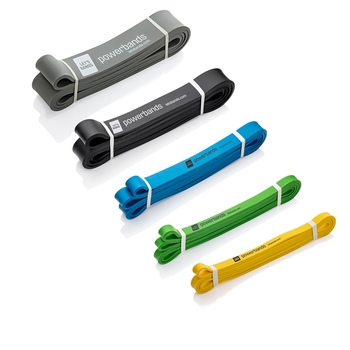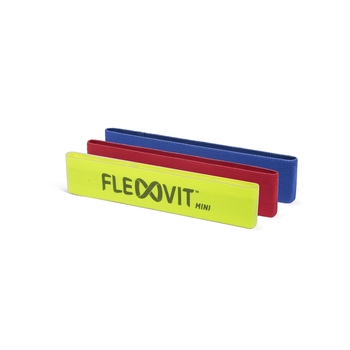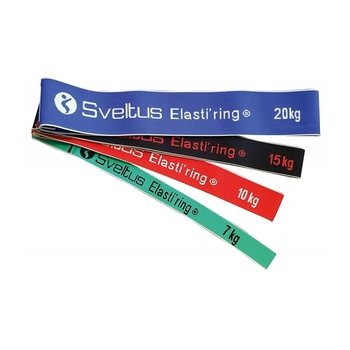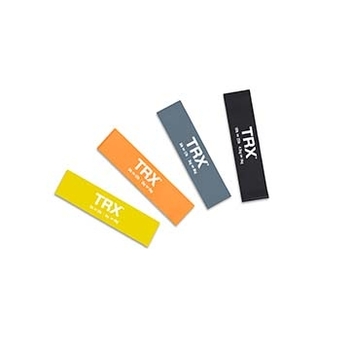Fabric or rubber bands? Who is the favourite of the coaches?
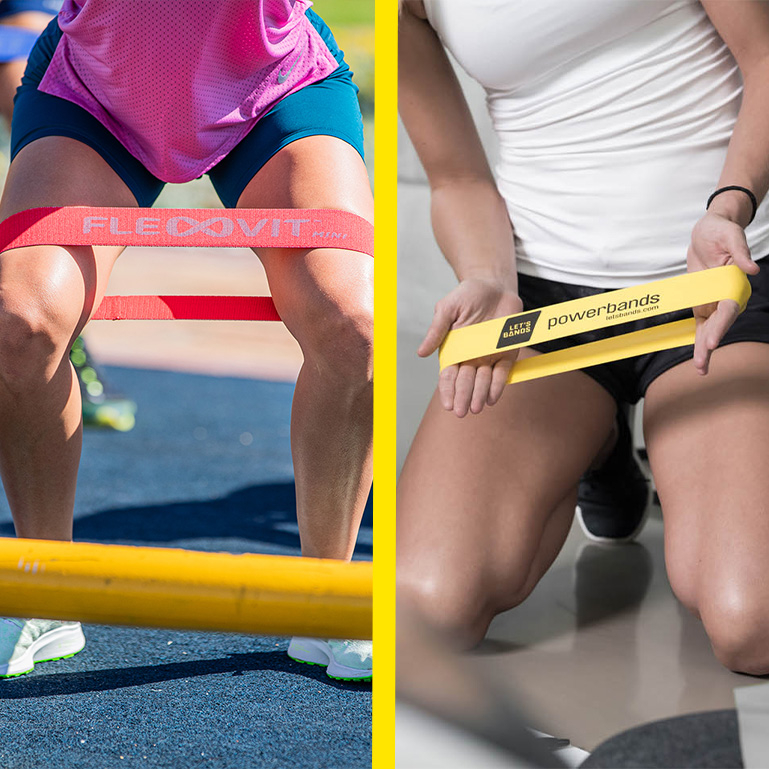
Which are better? What are the differences?
Fitness bands, elastic resistance bands, mini bands or loop bands, power bands or super bands, strength bands, therabands or flexbands and elastic tubes. They come in a wide variety of shapes, colours, strengths, sizes and qualities and are often used in strength training, physiotherapy, rehabilitation, but also in athletic and performance sports training.
In recent years we have seen the entry of textile or fabric bands into the fitness market and since then they have been gaining popularity in the elastic resistance fitness band and tube category.
Are you considering using fabric bands for yourself and your clients? What are the advantages and disadvantages of fabric bands compared to rubber elastic fitness bands? Will fabric bands replace elastic bands or complement the category of traditional fitness bands and tubes?
Rubber bands - fabric bands comparison! Advantages-Disadvantages
Features
- Cutting in during exercise
Rubber bands break easily if they are overused, not stored properly, made of inferior material or aged. To make your elastic bands last as long as possible, it's important to use and care for them properly, choose high-quality bands, and check them regularly for signs of wear and replace them when they show signs of ageing or damage.
Fabric straps usually do not cut into the skin because they are made of soft and stretchy material. They are usually the same width for all resistances, and so cut less than elastic bands, which are often thin to wide. Fabric bands can rarely become uncomfortable due to sweat during exercise. To avoid this, it is important to choose the right size and tension of the fabric band and reposition it if necessary during exercise.
- Resistance level coverage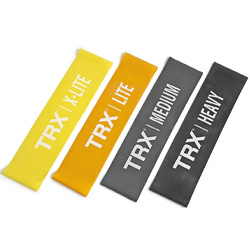
Resistance level coverage refers to the ability of a fitness band to cover multiple resistance levels to accommodate a wider range of exercises and training methods.
Both rubber and fabric bands offer a very good coverage of resistance levels.
Depending on the brand and model, fitness bands can range in width from 2.5 to 10 centimetres and offer resistance levels from very light to extra heavy. Some brands also offer several fitness bands as a set, each containing different resistance levels to cover a wider range of exercise intensities.
- Wearing comfort
Rubber fitness bands can be uncomfortable to wear or put on due to tension, material, design or lack of experience. Some bands may rub against the skin and cause irritation or discomfort. To avoid discomfort, it is important to choose the right size and tension of band, select good quality bands and practice using them to get used to the resistance they provide.
Fabric resistance bands are very comfortable and pleasant to wear because of their soft and stretchy material. Unlike elastic bands, fabric bands usually do not cut into the skin and do not cause irritation or discomfort.
- Handling and ease of use
It depends on the personal preference of the exerciser and the type of exercise being performed. Both types of elastic resistance bands have their own advantages and disadvantages in terms of handling and ease of use.
Elastic bands offer a very smooth and consistent stretch, making them ideal for high repetition exercises or high tempo movements.
Fabric bands tend to be wider and offer a better grip and stability than elastic bands. They can also be slightly more flexible, making them ideal for exercises with controlled movements and static holding positions.
Ultimately, it comes down to the personal preferences of the exerciser. It can be helpful to try different types of elastic resistance bands to find out which ones suit your needs and exercises best.
- Durability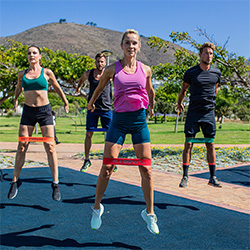
The longevity of elastic fitness bands depends on several factors, such as the quality of the rubber or fabric, the type of use, the frequency and intensity of use, and storage and care.
High quality elastic rubber and/or fabric bands that are made of sturdy and durable materials can last a long time if used and cared for properly. However, it is important not to stress the elastic fitness band beyond its maximum load limit as this can lead to damage or premature wear.
Since fitness bands are designed for frequent use and contact with sweat, you can wash them with mild soap and water if necessary. Simply soak the bands in a bowl of warm water with a small amount of mild soap for a few minutes and then gently scrub them with a soft brush or cloth. Rinse them thoroughly with clean water and allow them to air dry completely before using or storing them.
Fabric straps have the advantage that they can be cleaned in the washing machine.
For example, the FLEXVIT fabric bands can be washed in the washing machine at temperatures of up to 60 degrees. However, it is advisable to wash the tapes in a laundry bag or pillowcase to avoid damage from other garments or zips.
It is also important to ensure that fabric softener is not used as this can damage the material. Instead of using fabric softener, you can use vinegar as a natural fabric softener.
After washing, the fabric ribbons should be air dried. Avoid drying in the dryer as this can damage the material and reduce the elasticity of the ribbons.
In general, it's a good idea to follow the manufacturer's care and maintenance recommendations to ensure you care for them properly and maximise their life.
- Hygiene/Hypoallergenic
There are rubber bands that have been treated with antibacterial agents such as silver ions or triclosan to inhibit the growth of bacteria on the surface of the band.
However, it is important to note that although these bands reduce the growth of bacteria, they are not completely sterile and should still be handled and used with proper hygiene. In addition, the antibacterial properties can wear off or lose effectiveness over time, so it is important to replace the bands regularly to ensure long-lasting protection.
There are elastic fitness bands that are hypoallergenic and antibacterial. These bands are usually made of materials that are resistant to the growth of bacteria, such as silver- or copper-infused fabric. In addition, they may be treated with antimicrobial agents to prevent the growth of bacteria and other microorganisms.
Hypoallergenic textile fitness bands are designed to be gentle on the skin and less likely to cause irritation or allergic reactions. They are often made from materials that are free of common allergens such as latex or synthetic fibres.
When looking for hypoallergenic and antibacterial textile fitness bands, it is important to read product descriptions carefully and look for bands that are specifically labelled as such. It is also advisable to talk to your doctor if you have concerns about possible allergic reactions or sensitivities.
- Sustainability / Eco friendly / Sustainability
Rubber fitness bands are made of vulcanised natural or synthetic rubber, which means that many rubber bands may contain latex. In contrast, textile bands such as Flexvit bands use a high quality textile cover. Choosing textile materials allows for more sustainable production and reduces the use of natural or synthetic rubber.
Textile fabric bands are generally more robust and durable than pure rubber fitness bands. They can be easily cleaned in the washing machine and are resistant to tears or porosity that can occur with some rubber bands. This contributes to longevity and reduction of waste.
When buying fitness bands, it is important to look for certifications that confirm the environmental friendliness and harmlessness of the materials used. One example is the Oeko-Tex Standard 100, which ensures that the bands have been tested for harmful substances. The FLEXVIT fitness bands are certified according to the Oeko-Tex Standard 100.
Discover our wide range of rubber and fabric ribbons in the category "Bands & Tubes" with one click.
